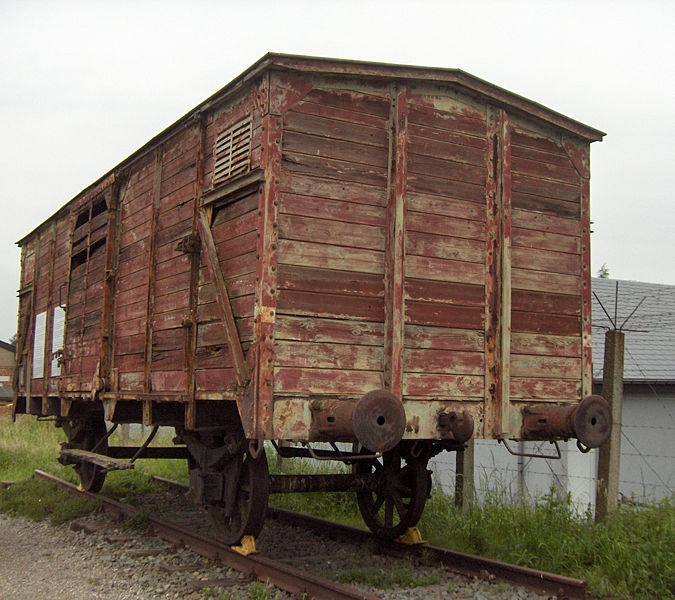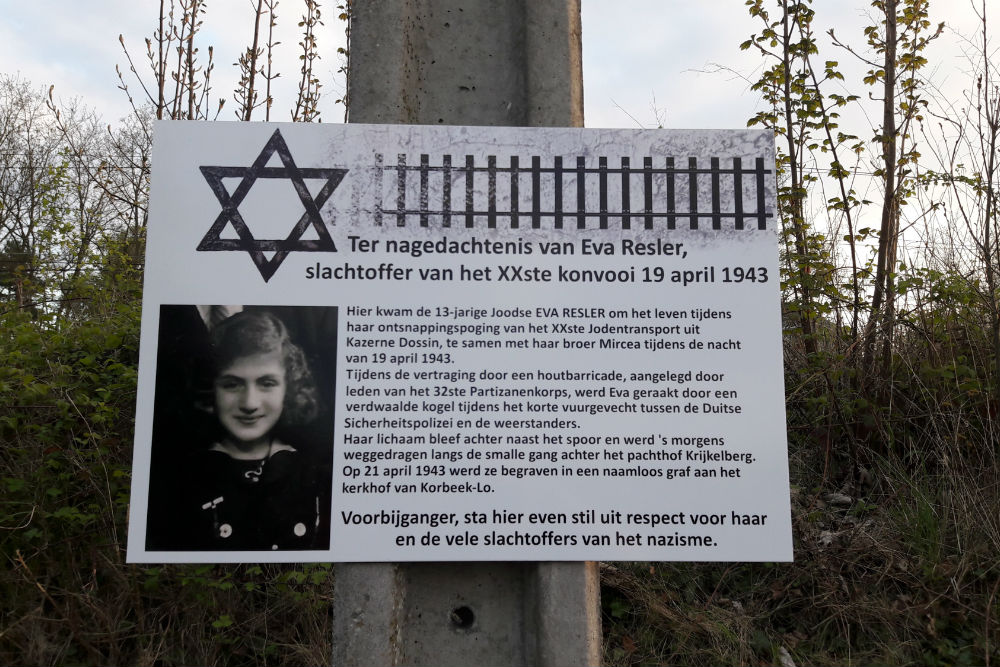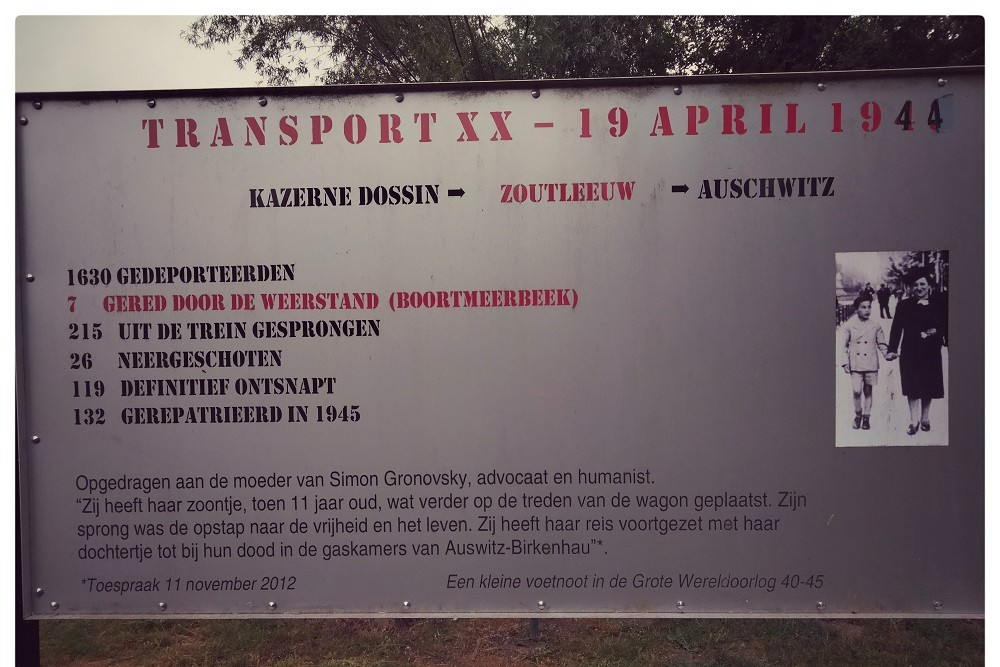Introduction
The deportation of Belgian Jews began in the summer of 1942. A transit camp was set up in Mechelen, a city that lies between Brussels and Antwerp, the two cities with the highest Jewish populations. Mechelen already had a military base which led to the creation of the Mechelen Transit Camp (SS-Sammellager Mechelen) The Dossinkazerne, as it was referred to by the local population, was the centre of the deportation of Belgian Jews to the concentration camps. Here they were gathered and put on trains to the east. More than 25,267 Jews were deported.
It seemed that nothing could stand in the way of the well-oiled deportation machine. However, they failed to factor in the courage of three young students who stopped a deportation and freed many Jews with just a storm lamp, red paper and one pistol.
Definitielijst
- Jews
- Middle Eastern people with own religion that lived in Palestine. They distinguished themselves by their strong monotheism and the strict observance of the Law and tradition. During World War 2 the Jewish people were ruthlessly persecuted and annihilated by the German Nazis. . An estimated 6,000,000 Jews were exterminated.
Images
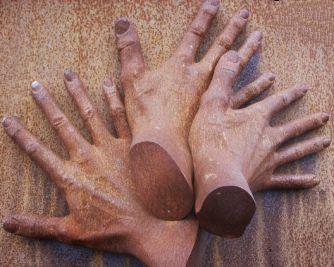 The three hands, a symbol of the three men who stopped the XXth convoy. Source: Website Marc Michiels.
The three hands, a symbol of the three men who stopped the XXth convoy. Source: Website Marc Michiels.Background
Through 18 anti-Jewish regulations between October 1940 and September 1942, the Jewish population was slowly but unmistakably shut out of socio-economic life. A first and important step was obligatory registration. All Jews above the age of 15 were registered in a district register. They also received the stamp ‘Jewish’ on their identity cards. 55,670 people were registered, of the approximately 60 to 70,000 Jews who lived in Belgium. Many of these people had fled Russia in the 1920s. 40% had Polish citizenship and 12,000 had fled from Nazi-Germany. They were therefore mostly foreign refugees. Due to this list, the Germans had a good overview of the Jewish presence and activity in Belgium. On 27th May 1942, the regulation that all Jews had to wear the yellow Star of David was introduced. From 1941 onwards, measures were declared with the aim of removing them from the economic world such as inventories of their property and a ban on new business enterprises. The most noticeable measure was the public marking of Jewish businesses and shops with signs.
In July 1942, the Germans went a step further. On 11th June 1942, during a meeting in Berlin, with Adolf Eichmann as one of the participants, they decided to begin the 'evacuation' of Jews from the Netherlands, Belgium and France. Belgium was to 'evacuate' 20,000 Jews in the first year.
On 25th of July 1942, the delegation of the Society for Jews in Belgium (Vereniging voor Joden in Belgie or V.J.B.) received the order from Kurt Asche, the SS officer responsible for 'Jewish affairs', to hand out written orders to 10,000 Jews to report for 'mandatory work'. Many Jews followed these orders and gathered at the Mechelen Transit Camp. The first transportation left on 4th August 1942 to Auschwitz-Birkenau.
The number of Jews who followed the written orders was lower than expected. The fact that children would also be put to work stirred suspicion in the Jewish population. Therefore, the V.J.B. received the order to encourage them to listen to the German commands. They had to register at the Dossinkazerne for their 'work'. Opposers were discouraged through threats: "Violations will result in severe punishment, also for family members and the entire Jewish community".
This did not have much impact. At the beginning of September 1942, only 3,900 of the 10,000 conscripted Jews had registered at the Dossinkazerne. In light of the poor results, Kurt Asche changed his tactics. Until then he had chosen a soft approach, letting as many people voluntarily sign up as possible. When this turned out to be unsuccessful, Asche opted for full-scale raids. The first raid occurred in the night of 15th and 16th August 1942 when the police in Antwerp arrested more than 1,000 Jews. During the night of 28th and 29th August and 3rd and 4th September, there were two more raids in Antwerp and Brussels, respectively. In Brussels, there was yet another raid on 11/12th September.
There was little active resistance against the raids and deportations. However, a few young people did not want to watch silently from the sidelines.
Definitielijst
- Auschwitz-Birkenau
- The largest German concentration camp, located in Poland. Liberated on 26 January 1945. An estimated 1,1 million people, mainly Jews, perished here mainly in the gas chambers.
- Jews
- Middle Eastern people with own religion that lived in Palestine. They distinguished themselves by their strong monotheism and the strict observance of the Law and tradition. During World War 2 the Jewish people were ruthlessly persecuted and annihilated by the German Nazis. . An estimated 6,000,000 Jews were exterminated.
- Nazi
- Abbreviation of a national socialist.
- raid
- Fast military raid in enemy territory
- resistance
- Resistance against the enemy. Often also with armed resources.
Images
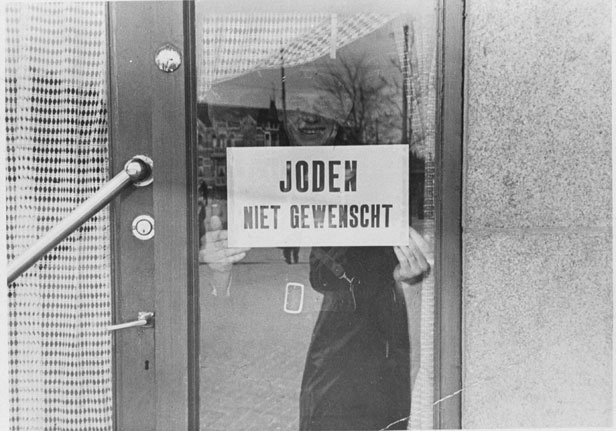 Jews were increasingly shut out of society. Source: www.annefrankguide.com.
Jews were increasingly shut out of society. Source: www.annefrankguide.com.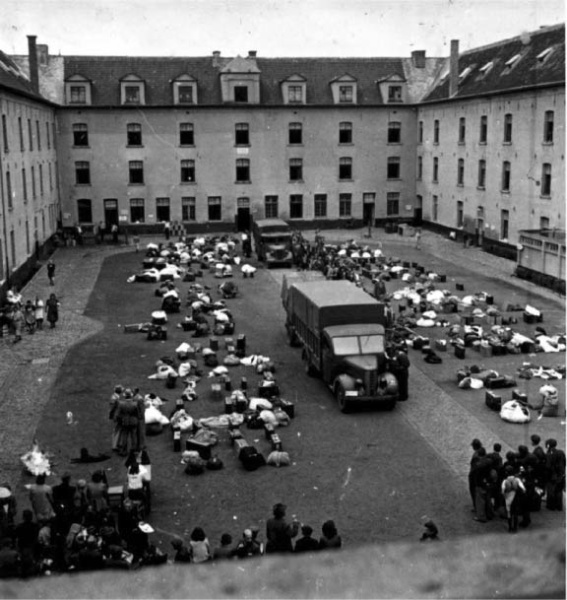 The courtyard of the Dossin Barracks: here the Jews were gathered before being sent to Auschwitz. Source: www.cicb.be.
The courtyard of the Dossin Barracks: here the Jews were gathered before being sent to Auschwitz. Source: www.cicb.be.The Attackers
Youra 'George' Livchitz, was a Jewish immigrant from Ukraine. He was born in the capital city of Kiev. His parents, Rachel and Schlema Livchitz, belonged to the wealthiest class in their country. When his parents divorced, Rachel moved to Brussels in 1927 with her two sons, Choura 'Alexandre' and Youra. In the 1930’s, Youra went to secondary school in Ukkel. There he met Jean Franklemon, and Robert Maistriau, who was three years younger.
After secondary school, he studied medicine at the Free University of Brussels, the French-speaking liberal university in Brussels. In June 1942, he had to give up his job as a resident physician because the German occupiers had banned Jews from working in medical occupations. Instead, he started working at the pharmaceutical company Pharmacobel. During his student years, he was active in the theatre and in Marcel Hastir's artist collective, where the resistance newspaper "Le Flambeau", among others, was printed.
In the liberal environment of the Free University of Brussels, the resistance group Groupe-G manifested, which specialised in sabotage activities. The leading figures were Jean Burgers, Robert Leclerq, Richard Altenhoff and Henri Neumann. They worked closely with the SOE (Special Operations Executive), a British secret service that Winston Churchill said would "set Europe ablaze". Youra’s brother, Choura was also a member of Groupe-G.
Jean Franklemon was in the same class as Livchitz in high school in Ukkel. After a while, they would meet again at the Free University. Franklemon studied mathematics but was not often seen in class. He dropped out of Free University to study at the Art Academy of Kameren.
Robert Maistriau was born in 1921. His father was a military doctor and had experienced the horrors of the First World War. Through his experiences, he did not get on well with the Germans. Additionally, his mother’s first husband was a French Jew and had died in the First World War. There was a strong anti-German sentiment in the Maistriau family. Just like Livchitz, Robert began studying medicine after secondary school. However, he soon dropped out and went to work at the metal company Fonofer. He was bored by his job so he decided to join a resistance group. "I wasn't crazy", he said, "but I was easily swayed and I was prepared to take risks."
Definitielijst
- First World War
- Took place from 1914 till 1918 and is also named The Great War. The conflict started because of increased nationalism, militarism and neo-colonialism in Europe. Two alliances battled one another during the 4-year war, which after a dynamic start, resulted into static trench warfare. The belligerents were the Triple Alliance (consisting of Great-Britain, France, and Russia; later enlarged by Italy and the USA, amongst others) on the one hand and the Central Powers (consisting of Germany, Austria-Hungary, Bulgaria and the Ottoman empire) on the other hand. The war was characterized by the huge number of casualties and the use of many new weapons (flamethrowers, aircraft, poison gas, tanks). The war ended in 1918 when Germany and its allies surrendered unconditionally.
- Jews
- Middle Eastern people with own religion that lived in Palestine. They distinguished themselves by their strong monotheism and the strict observance of the Law and tradition. During World War 2 the Jewish people were ruthlessly persecuted and annihilated by the German Nazis. . An estimated 6,000,000 Jews were exterminated.
- resistance
- Resistance against the enemy. Often also with armed resources.
- SOE
- Special Operation Executive. British organisation during World War 2 conducting secret operations and espionage.
Images
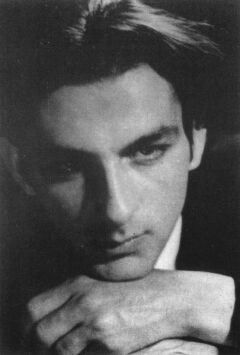 Youra "George" Livchitz Source: Website Marc Michiels.
Youra "George" Livchitz Source: Website Marc Michiels.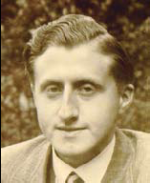 Robert Maistriau Source: Website Marc Michiels.
Robert Maistriau Source: Website Marc Michiels.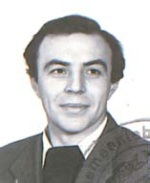 Jean Franklemon Source: Website Marc Michiels.
Jean Franklemon Source: Website Marc Michiels.The Plans
The plan to ambush a convoy leaving from the Dossinkazerne began to ripen at the start of 1943. In the resistance newspaper, Le Flambeau, Meyer Tabakman said that he had escaped deportation on 15th January 1943 by jumping out of a train. That was quite simple to achieve because third-class train carriages had been used. The prisoners could easy escape through the windows since they could not be closed properly. Sixty other prisoners had also escaped from the same convoy that Tabakman had escaped from.
During this period, there were many fellow resistance members locked up in the Dossinkazerne. The hunt for resistance members had been pushed up a notch. On 20th January 1942, the Belgian RAF pilot, Jean de Sélys-Longchamps attacked the Gestapo headquarters in Brussels and caused much damage. "That gave us a boost in energy", Robert Maistriau remembers. He went to the Louizalaan to inspect the damage and came across Youra. "That sudden feeling that the Germans were not so untouchable after all. And another thought: when are we finally going to take action?"
In response to these events, the resistance members discussed attacking the XXth convoy, in the first instance to free comrades. Youra Livchitz was also involved in the talks but the partisan leader, Jean Terfve thought the idea was too risky. Groupe-G was also not prepared to participate. Youra’s brother would probably have been willing to help, but he had been shot twice in the leg during a failed attack on 12th March 1943.
The risks were indeed great. After a large number had escaped from the previous convoy, the Germans took greater security measures. Now they would use closed cattle wagons. The locked sliding doors were also secured with barbed wire which made it virtually impossible to escape. The convoy, one of the biggest that had ever left Mechelen, was also accompanied by a 40-strong commando of the Schutzpolizei.
On 16th April 1943, just three days before the raid, Livchitz, (one of the leaders of Group-G) took the advice of Robert Leclercq and spoke with his old schoolmate Maistriau. He immediately confirmed his participation. Franklemon would also work with them.
Livchitz was rather well informed about the convoy. He knew that the train would be accompanied by the Schutzpolizei. He also knew that the cattle wagons could be open fairly easily with a pair of pincers. Still, the plan was flimsy. They would place a red signal lamp in Boortmeerbeek, where the train came round a corner, then they would open as many carriages as possible.
Definitielijst
- RAF
- Royal Air Force. British air force
- raid
- Fast military raid in enemy territory
- resistance
- Resistance against the enemy. Often also with armed resources.
Images
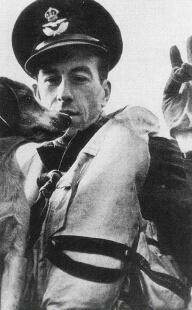 Jean Sélys de Longchamps gave many people new courage after his attack of the Gestapo headquarters. Source: www.battleofbritain.be.
Jean Sélys de Longchamps gave many people new courage after his attack of the Gestapo headquarters. Source: www.battleofbritain.be.The Attack
On 19th April 1943, at around half past eight, Livchitz, Maistriau and Franklemon met at the Generaal Meiser Square in Schaarbeek. Maistriau had bought pincers and a lamp by the German brand Feuerhand. He attached some red tissue paper to the storm lamp and created a red signal lamp. Richard Altenhoff of Groupe-G provided them with a 6.35mm pistol but he did not want to participate in the ambush himself. Livchitz had received a stack of 50 Belgian franc notes from the Jewish Defence Committee (Joods Verdedigingscomité or JVC/CDJ) to hand out to refugees.
Via Leopold III Street, the three cycled to Brussels. Then, they went via Haachtse Steen Street, through Steenokkerzeel and Kampenhout in the direction of Haacht. Via a woodland passage, parallel to the railway line between Haacht and Boortmeerbeek, they cycled toward the station at Boormeerbeek, a small village between Mechelen and Leuven.
Around quarter to ten, they arranged themselves along the railway line. Their bicycles were hidden in the hedgerows and all they had to do was wait. At 23:00 the XXth convoy left Mechelen. The train rode slowly during the entire route and people in the carriages started to prepare themselves for escape. The JVC/CDJ had succeeded in smuggling pincers and knives into the Dossinkazerne.
Regine Krochmal, a 22-year-old nurse, succeeded in escaping from the train before it was stopped by the resistance members. She was able to saw through the wooden rails that were installed as ventilation. "The train slows down, I jump and the train stops. The rattling of machine guns, angry yells from the Germans. Apparently there are other attempts at escape. I push myself to the ground (or rather, try to push myself into the ground) with all my might and lose all sense of time. Motionless, I lay still, barely daring to breathe. The minutes go by as if they were hours. Suddenly, the train begins to move again. Carefully I stand up, knife in hand. The house of an intersection watchman is close by. In the house, there is a young man. I creep towards him and tell him that I'm Jewish, that I jumped out of the train and need help. Without saying a word, he puts his finger on my mouth to make it clear that I needed to be silent. He took me by the arm and brought me to a field behind the station where there were a few stacks of hay bales. Quickly, he pushed me into one of the stacks and covered me with hay. Hastily, he ran back to the house."
In the meanwhile, Mastriau had put the lamp at the end of the bend. When the engine driver, August Buvens, saw the sign he braked immediately. The first carriages had rolled past the sign by the time the train had come to a complete halt. Livchitz, Maistriau and Franklemon did not react to begin with.
Maistriau said the following about that moment: "We were lying in the thicket. Thumping hearts. The grinding of brakes. It was unreal. The train rode through a signal; that I could see from my position. We looked at each other. Suddenly, the realisation. It stopped. It stopped! I think that deep in our hearts we hadn't considered that possibility. It was more a case of: we’ll put the lamp there and see what happens. Jean stayed seated, Youra fiddled with the pistol. There was the train, in the dark. Seconds, minutes – I no longer remember – went by. Nothing happened. No noise, nothing. I sat on the verge. I thought, 'this will be the death of me'. I stood up and brought out my pincers. I hesitated. Too long perhaps. But I took my torch and walked to the last carriage."
Maistriau was successful in opening one carriage: seventeen people used the opportunity to escape. He tried to open another carriage but he had no time left. Livchitz had fired at the first carriage with Germans so they thought they were up against a strong resistance group. After the Schutzpolizei realised that this was not the case, they opened fire. Meanwhile, Franklemon walked to the back carriages but he was surprised by German soldiers. The resistance members did not know that the last carriage also contained Germans.
The Jews who escaped and their saviours searched for cover in the thicket. When the train left, Maistriau handed the money out and explained how the seventeen escapees could take the tram from Haacht to Brussels. Maistriau and Franklemon went by bicycle to Brussels. They did not know what happened to Youra. He called the next day to report that everything was in order. He had to flee when the Germans fired at him.
Definitielijst
- Jews
- Middle Eastern people with own religion that lived in Palestine. They distinguished themselves by their strong monotheism and the strict observance of the Law and tradition. During World War 2 the Jewish people were ruthlessly persecuted and annihilated by the German Nazis. . An estimated 6,000,000 Jews were exterminated.
- resistance
- Resistance against the enemy. Often also with armed resources.
Images
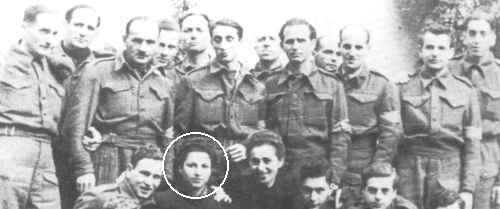 Régine Krochmal together with her partisan group ‘Osterreicher Freiheit Front. Krochmal is one of the Jews who was freed from the XXth convoy. Source: Website Marc Michiels.
Régine Krochmal together with her partisan group ‘Osterreicher Freiheit Front. Krochmal is one of the Jews who was freed from the XXth convoy. Source: Website Marc Michiels.Aftermath and Remembrance
Seventeen people had escaped at Boormeerbeek but several more followed their example before the train had left Belgium. In Total, 232 prisoners jumped out of the trains. Sixteen people died during their escape attempts and ten others would later die from their wounds.
On 22nd April 1943, the XXth transport with 1,404 Jews on board arrived at Auschwitz. Only 152 of them survived the war.
Eighty-seven of the escaped Jews were recaptured and deported to Auschwitz for a second time. Regine Krochmal was one of the people who was captured a second time. They were first imprisoned in the Auffanglager Breendonk to be later transported to the Dossinkazerne. There they were locked up in a cell for political prisoners. On 3rd September 1944, they were liberated.
Simon Gronowski was 11 years old when he was put on the XXth convoy. He jumped out of the train around Borgloon. After his return to Brussels, he hid with several Belgian families until the liberation. He never saw his mother and sister again. His father died in July 1945. Simon became a lawyer at the Brussels Bar. .
Youra Livchitz was arrested by the Gestapo a few weeks later and taken to their headquarters on the Louizalaan in Brussels. Despite severe molestation, he was able to escape. This was temporary. On 26th July 1943, he and his brother were caught with weapons in his car by the Feldgedarmerie. The brothers were transported to Breendonk. On 9th February 1944, Choura was executed at Schaarbeek. On 17th February, Youra met the same fate.
Jean Franklemon was arrested 7th August 1943. After a short stay in Breendonk, he was deported to Sachsenhausen. He survived the concentration camp and after the war he became a musician in East Germany. In 1977, he died in a village near Frankfurt.
Robert Maistriau became an active member of Groupe-G after the attack. He was responsible for recruitment. He was also involved with "la grande coupure", a sabotage attempt that left a part of Belgium without electrical power. In March 1944, he was also arrested and sent to Breendonk. With the transportation of 4th May 1944, he arrived in Buchenwald, before surviving Dora-Mittelbau and Bergen-Belsen. After the war, he emigrated to Congo where he became the owner of a chain of shops. In 1995, he returned to Belgium for health reasons. Robert Maistriau died in 2008 at the age of 87.
On 16th May 1993, in commemoration of the 50th anniversary of this event, a memorial was unveiled at Boormeerbeek station. On 8th May 2005, a remembrance statue was installed for Livchitz, Maistriau and Franklemon. This is in memory of this little-known event. The brave attack by these three men is, as far as we know, an exception in the history of World War II. Nowhere else in occupied Europe were there other attempts to stop a train with deported Jews. There is a yearly remembrance ceremony.
Definitielijst
- concentration camp
- Closed camp where people are being held captive that are considered to be anti- social, enemies of the state, criminal or unwanted individuals. These groups mostly do not get a fair trial or are condemned to doing time in a camp.
- Jews
- Middle Eastern people with own religion that lived in Palestine. They distinguished themselves by their strong monotheism and the strict observance of the Law and tradition. During World War 2 the Jewish people were ruthlessly persecuted and annihilated by the German Nazis. . An estimated 6,000,000 Jews were exterminated.
Images
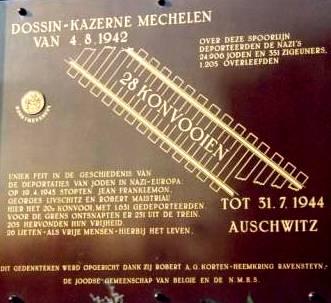 The remembrance plate that hangs in the Boortmeerbeek station. Source: Website Marc Michiels.
The remembrance plate that hangs in the Boortmeerbeek station. Source: Website Marc Michiels.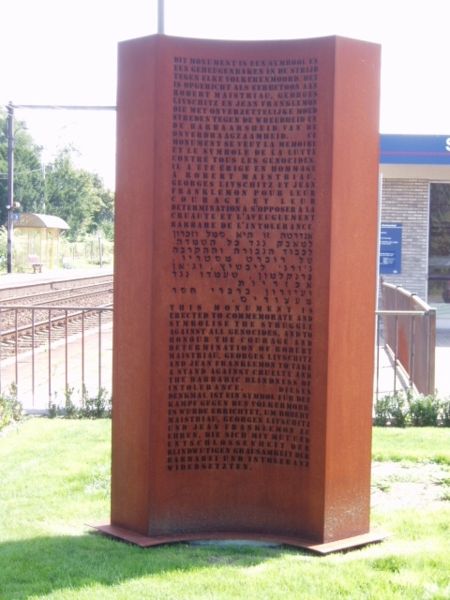 The monument of Etienne Desmet in memory of the attack on transport XX. Source: Website Marc Michiels.
The monument of Etienne Desmet in memory of the attack on transport XX. Source: Website Marc Michiels.Information
- Article by:
- Gerd Van der Auwera
- Article by:
- Rachael Darwin
- Feedback?
- Send it!
Related sights
Sources
- De Belgische Tentoonstelling In Auschwitz : Het Boek, Het Joods Museum voor Deportatie en Verzet, 2006.
- HERMAN VAN DE VIJVER & RUDI VAN DOORSLAER, België in de Tweede Wereldoorlog 6, De Nederlandsche Boekhandel, Kapellen, 1988.
- PATRICK NEFORS, Breendonk 1940-1945, Standaard Uitgeverij, Antwerpen, 2004.
- PAUL LOUYET, België in de Tweede Wereldoorlog 4, De Nederlandsche Boekhandel, Kapellen, 1984.
- SCHREIBER, M., Stille rebellen. De overval op de twintigste deportatietrein naar Auschwitz, Atlas, 2001.
